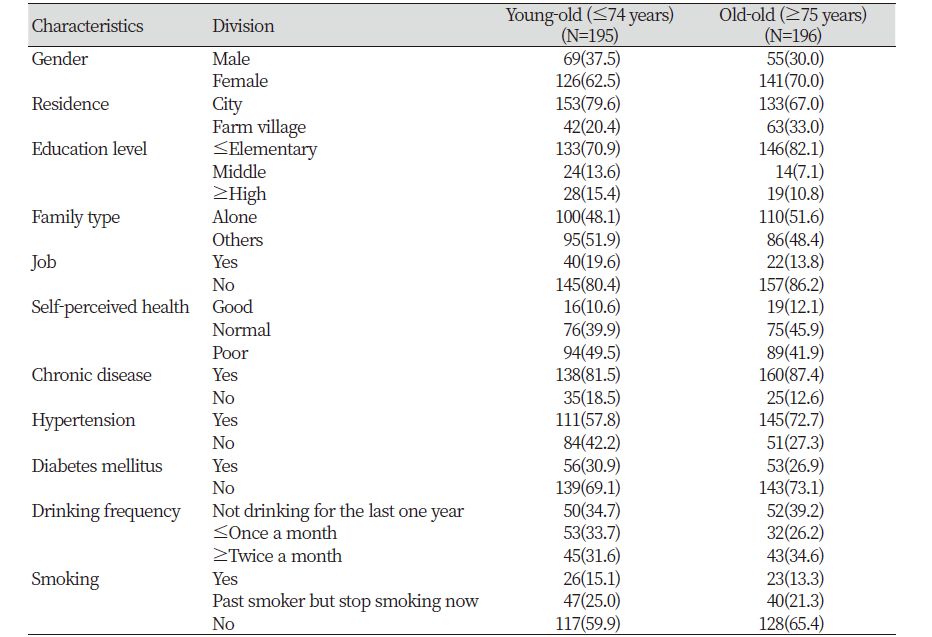Abstract
Objectives: The purpose of this study was to investigate the oral health status and oral health behavior and identify the factors related to the oral health status by age-specific groups in vulnerable elderly individuals. Methods: We used data from the 7th Korea National Health and Nutrition Examination Survey. The differences in the oral health status and oral health behavior by age-specific groups were analyzed using complex sample chi-square tests and a generalized linear model. The relationship between the oral health status and oral health behavior by age-specific groups was analyzed using a complex samples general linear model. Results: The DMFT index of the young-old elderly was 10.65±0.60, and that of the old-old elderly was 12.78±0.72, which was higher. The condition of the mandibular prosthesis was more common in the old-old elderly, and there was a statistically significant difference (
Figures & Tables



